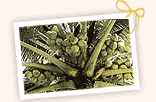Hindu Of Universe
Sacred Trees
It is mentioned of the Kalpavriksha
and Chaityavriksha in the ancient scriptures indicating that
the worship of the tree is indeed an ancient Indian practice. The
Ancient Aryans worshiped nature. Plants, Trees and the other elements
were always revered and several rituals were connected to them. Tree
worship continues to be an element of modern Indian traditions. There
are many trees which are considered Sacred. Some of the Sacred Trees
are as follows :
 Ashoka
Tree
Ashoka
Tree
The Ashoka Tree is one of the most sacred and legendary trees
of India, and one of the most fascinating flowers in the Indian range
of flower essences. The beautiful, perfumed flowers of the Ashoka Tree
are used in temple decoration. Prized for its beautiful foliage and
flowers, the Asoka Tree has many religious significances. This tree is
revered by the Hindus, Buddhists and Jains. It is said that
Lord Buddha was born under this tree in Lumbini. Some says that
Lord Mahavira renounced the world under the Ashoka tree in
Vaishali. The Hindus worship this tree because it is dedicated to "Kama
Deva" (God of Love). The Ashoka tree gets a mention in the epic
Ramayana as the "Ashoka Vatika" (garden of Ashoka trees)
where Hanuman first meets Sita. Literally meaning "the "sorrowless
tree", it is believed that drinking the water in which the flowers
have been washed is widely considered a protection against grief among
the Indians.
 Banyan
Banyan
Like the Peepal Tree, the Banyan Tree also symbolizes the
Trimurti-Lord Vishnu, Lord Shiva and Lord Brahma. The tree also
symbolizes life and fertility in many Hindu cultures.
That is the reason, banyan tree is worshiped by those who are
childless and this tree should never be cut. The tree can grow into a
giant tree covering several hectares. The Great Banyan in the
Indian Botanic Garden, Howrah, is considered to be the largest tree in
the world. Lord Dakshinamurthy,
who is worshiped as the "ultimate guru", is usually depicted beneath a banyan tree.
He symbolizes Lord Shiva and is seen as the the destroyer of ignorance and embodiment
of knowledge.
 Bael
Tree
Bael
Tree
In India, Bael tree is considered to be very sacred because it is
associated with Lord Shiva. It is said that Lord Shiva is pleased by
offerings of leaves from the Bael Tree, also known as bilva or
bel tree. Thus, the Brahmanas worshiped Lord Shiva by for a
period of one fortnight by offering bel leaves and that way satisfied
Lord Shiva greatly. The fruit, flowers and leaves of the tree are all
sacred to Shiva. Planting these trees around home or temple is
sanctifying and is equivalent to worshiping a Linga with bilva
leaves and water. The trifoliate leaf or tripatra of the bael tree is
believed to symbolize the three functions of the Lord-the creation,
preservation and destruction as well as his three eyes. The
offering of the leaves is a
compulsory ritual while worshipping Lord Shiva all over India. The Beal tree is also sacred
to the Jains. It is said the 23rd Tirthankara, Bhagwan Parasnathji attained "Nirvana"
enlightenment under a Bael tree. Besides religious significane, almost all parts of the
tree have medicinal qualities Bael is an ingredient in many
Ayurvedic and Siddha formulations.
 Bamboo
Bamboo
The common names of Lord Krishna-Venugopal, Bansilal, Murali and
Muralidhar reflect His association with Bansuri or Venu,
His constant companion. Bansuri is actually a flute made of
bamboo. That is the reason, bamboo is revered in India because it is
associated with Lord Krishna.
 Banana
Banana
Though banana is not a tree but it is considered a tree because of its
structure and size. It is a very sacred tree and all parts of the tree
are used for some purpose or the other. For example, the trunk of
banana is used to erect welcoming gates. The leaves are used to make
the ceremonial pavilion. In some pooja, the leaves are used to serve
"prashad". Just as leaves of bel tree are customarily offered
to Lord Siva, it is believed
that offering of the leaves of banana pleases Lord Ganesa. Banana as a fruit is offered to
Lord Vishnu and Laksmi. Infact, the eleventh day of the bright half of Pausa (December-January)
is considered to be very auspicious to offer banana to Lord Vishnu and Goddess Laxmi and sixth day
of the bright fortnight of Kartika (October-November) is considered auspicious to
offer banana to the Sun god. In some regions, banana tree is worshipped while performing
Kadali Vrata or fast. According to tradition, during Vaisakha, Magha or Kartika sukla
caturdasi, a banana tree is planted and nurtured till it bears fruit. It is said that worshiping
the tree with flowers, fruit, etc. will help in the welfare of
one's family.
Bhang Tree
To all Hindus, the Bhang Tree is a very Holy Tree. There are
many beliefs associated
with the Bhang Tree. It is believed that a guardian lives in the Bhang leaf. To see in a dream
the plant or water or leaves of Bhang is considered lucky as it brings wealth and
prosperity into the dreamer's power. To meet someone carrying Bhang is a sure sign
of success. Bhang is a popular drink made of the leaves and flowers of the Bhang
tree and considered to be a "prashad". It is must for every devotees to have bhang on
Mahashivratri. It is also said that nothing good can come to
the man who treads underfoot the holy Bhang leaf. A longing for Bhang
is a sign of happiness. Since ancient times, Yogis take deep draughts
of Bhang so that they can center their thoughts on the Eternal without
any disturbance because bhang has that intoxicating power in it.
Infact, the students of ancient scriptures at Benares are given Bhang
before they sit to study. Bhang has also many medicinal virtues. It is
also believed that no god or man is as good as the religious drinker
of Bhang. It is also said that to restrict the use of such a holy and
gracious herb as the hemp or Bhang would cause widespread suffering
and annoyance.
 Coconut
Coconut
In Sanskrit, the name for the coconut palm "Kalpa vriksha",
which means "the tree which provides all the necessities of life"
or "wish-fulfilling tree". The coconut tree is given a special
place in most Hindu households and great care is taken to nature the
tree. In the southern part of India, it is a must for every household
to plant coconut trees. There is a popular saying, "Water the plant
for five years, reap coconuts for life" . The coconut is used for
all religious purposes. Infact, it represents the main "sthapana"
of any pooja. The whole pot filled with water, mango leaves and
coconut, also known as "Purnakumbha" is a symbol of Goddess
Laksmi or Fortune and the coconut represents divine consciousness. To
break a coconut in the beginning of any event is considered to be very
auspicious. Coconuts are offered in Temples to worship to various Gods
and Goddesses. The fruit is also believed to represent Lord Shiva and
the three black marks on the coconut shell, symbolizes his eyes.
 Lotus
Lotus
The Lotus is always considered as an evocative symbol of
beauty, purity and divinity and a highly revered flower by all Hindus.
In Hinduism many of the deities are pictured sitting upon a lotus or
holding a lotus flower. Rising up pure and unsullied from the depths
of the muddy swamp, the lotus represents the manifestation of God. The
pure white lotus flower is the only plant to fruit and flower
simultaneously.
The flower is a symbol of Goddess Laxmi. One of the
incarnations of the Mother-Goddess or Devi and wife of the Hindu god
Vishnu, Laxmi is the goddess of fortune and prosperity as well as the
epitome of feminine beauty. According to Hindu mythology she was born
radiant and fully grown from the churning of the sea. Lakshmi is
always portrayed as sitting on a lotus flower which is her traditional
symbol. That is why this flower held in high esteem. The Lotus flower
has also symbolized spiritual enlightenment. It is said that the Lotus
in Eastern Culture has a similar symbolism to the Rose in
Christianity.
 Mango
Mango
The mango tree is another sacred tree of the Hindus. The significance
of this finds mention in the Ramayana, Mahabharata and the
Puranas. The mango as a fruit is a symbol of love and fertility.
The leaf of the tree is used during most religious and social
ceremonies of the Hindus. A "Purnakumbha" is a pot filled with
water and topped with fresh mango leaves and a coconut and considered
to be the "staphna" of the puja. The pot symbolizes Mother
Earth, water is the life giver, coconut the divine consciousness and
the mango leaves symbolizes life. The whole "Purnakumbha" is
symbolizes Goddess Lakshmi and good fortune. On various auspicious
occasions, mango leaves are used to adorn entrances at home to signify
good fortune. Mango blossoms are used on Basant Panchami day in the
worship of Goddess Saraswasti. The tree is also sacred to the
Buddhists because it is believed that Lord Buddha performed during his
lifetime the instantaneous creation of a large mango tree from the
seed at a place called Shravasti.
 Neem
Neem
It is said that on the first day of Chaitra, after Amavasya, it is
very essential to worship the neem and eat its leaves, mixed with
pepper and sugar, as a safeguard from fever. The neem tree besides
having various medicinal benefits is a highly revered tree among the
Hindus because it is a manifestation of "Goddess Durga" or "Maa Kali".
That is why the tree is sometimes referred to as Neemari Devi.
The Tree is worshiped very intensely. Tamil Ladies, while worshiping
Maa kali dress in red, carry branches of the Neem tree, and
dance in public places swishing the branches as an act of exorcism and
to purify the world. The multi-headed occult goddess Yellamma (a
highly revered goddess in south Indiai) sometimes assumes the
appearance of a young neem tree. Young maidens worship this Goddess by
cladding themselves all over in neem branches. In Bengal, neem is
considered to be the tree which is the abode of "Sitala" (the
great Pox-mother who can cause or cure disease). The customary
treatment of pox is therefore to rub the body with neem leaves while
making prayers to Sitala. It is also said that the smoke of
burning neem protects both the living and the dead from evil spirits.
 Peepal
Peepal
The Peepal Tree also known as "Ashvattha" in Sanskrit, is a
very large tree and the first-known depicted tree in India. A seal
discovered at Mohenjodaro, one of the cities of the Indus Valley
Civilisation depicts the peepal being worshiped. According to the
Brahma Purana and the Padma Purana, when the demons
defeated the gods, Lord Vishnu hid himself in the Peepal Tree
and that is why it is believed that the
Peepal Tree is a symbol of Vishnu and is worshiped since a long
period of time. There is another belief that the tree represents the
Trimurti-the roots being Brahma, the trunk Vishnu and the
leaves Shiva. Some says that Lord Krishna is believed to have
died under this tree, after which the present Kali Yuga started.
According to another belief, Goddess Lakshmi also inhabited the tree,
specially on Saturday and hence it is considered auspicious to worship
it. Infact women worship the tree to bless them with a son tying red
thread or red cloth around its trunk or on its branches. According to
the Skanda Purana, to cut down a peepal tree is considered a
sin. Even Buddha is believed to have attained enlightenment under the
peepal tree and the peepal is also sacred to Buddhist. Hence it is
also called the Bodhi tree or "tree of enlightenment".
 Red
Sandalwood Tree
Red
Sandalwood Tree
Besides being used in fragrance industry, fine woodworking and
aromatherapy, Sandalwood is commonly used for incense and religious
ceremonies. The Red Sandalwood Tree is considered to be a very
sacred tree and is like a sage among many people. It is said that all
other trees are considered ordinary trees and are like ignorant men in
front of a Red Sandal wood. Popularly known as Chandan,
Sandalwood has an extraordinary fragrance. Sandalwood paste is used in
all religious rituals. The paste is smeared on the foreheads of
devotees of Vishnu and Shiva and it is said that the sandalwood paste
is meant to cool and protect the "Agna chakra" present between
the eyebrows. In India, the death pyre is made using sandalwood
branches for centuries. According to legend, Lord Ganesha was created
by Goddess Parvati out of sandalwood paste that she used for her bath
and breathed life into the figure. According to Indian mythology,
sandalwood tree is depicted as being entwined with serpents.
Sandalwood remains cool and aromatic even when the poisonous serpent
coils around it. This also has another meaning that the basic nature
of an individual cannot change because of outer effects.
Tulsi
Tulsi is always associated with purity and a highly revered and
used for all religious purposes among the Hindus. It is considered
very auspicious to have a Tulsi plant in the front courtyard of many
Hindu households. Tulsi beads can always be seen around the necks of
serious yogis and mystics in India, worn to purifying the mind,
emotions and body. Dispelling the unwanted influences of others, gross
and subtle, is one of the many benefits bestowed by Tulsi plant and
hence worshipped by all.
Tulsi plants are also prized in Ayurveda, where they are considered an integral part of that sophisticated healing system. In practically every temple in India, no puja can be started without few Tulsi leaves. There is always a special place reserved for this sacred plant. The qualities and amazing powers of this plant are found throughout the oldest writings on Earth, the Sanskrit Vedas of ancient India, where it is stated that simply touching the wood is purifying at many levels. Tulsi plant is most loved by Lord Vishnu and Vrinda Devi, the Goddess ruling Tulsi is known as the personification of bhakti or devotion to the Supreme Being.
